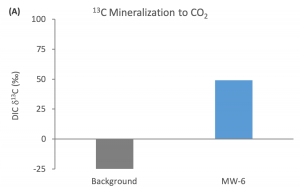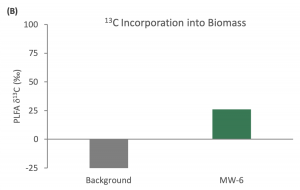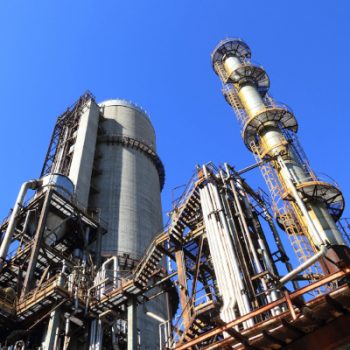Stable isotope probing (SIP) is an innovative MBT that uses a Bio-Trap® amended with a 13C “labeled” contaminant (e.g. 13C benzene) to conclusively determine whether biodegradation has occurred. The 13C label serves much like a tracer which can be detected in the end products of biodegradation – microbial biomass and CO2 .

SIP ADVANTAGES:

CONCLUSIVE
With the SIP method, a Bio-Trap® amended with a 13C labeled contaminant is deployed in an impacted monitoring well for 30 to 60 days. Detection of 13C enriched phospholipid fatty acids (PLFA) following in field deployment, conclusively demonstrates in situ biodegradation and incorporation into microbial biomass. Detection of 13C enriched dissolved inorganic carbon demonstrates contaminant mineralization.

VERSATILE
SIP can provide conclusive evidence of biodegradation of many common contaminants including benzene, other BTEX compounds, MTBE, naphthalene, and other contaminants that microorganisms can utilize as carbon and energy sources.

COST EFFECTIVE
SIP ultimately saves money by allowing site managers and regulators to make more informed decisions. SIP is often employed during remedy selection to conclusively evaluate in situ biodegradation of a key contaminant and the feasibility of monitored natural attenuation (MNA).

IN SITU
Unlike laboratory studies, SIP study results reflect in situ biodegradation activity because the 13C contaminant adsorbed to the Bio-Trap® is exposed to the same subsurface conditions and processes as the site contaminants during the field deployment period.

RELATIVE RATES
While SIP results cannot provide biodegradation rates, comparisons between wells can provide an indication of relative rates. Moreover, SIP can be performed as an additional line of evidence in an In Situ Microcosm (ISM) study to compare the effect of different treatment options on contaminant biodegradation.

STRAIGHT FORWARD
A SIP report includes an Executive Summary with data interpretation and results for pre- and post-deployment 13C contaminant concentrations, observed levels of 13C incorporation and mineralization, microbial community structure, and additional guidance and background information.
HOW TO USE STABLE ISOTOPE PROBING:
Stable isotope probing is used to conclusively determine whether in situ biodegradation of a specific, risk-driving contaminant is occurring.
Use SIP to help answer…
- Is biodegradation occurring? Is MNA feasible?
- The detection of 13C enriched PLFA demonstrates biodegradation of the contaminant by proving incorporation into microbial biomass.
- The detection of 13C enriched dissolved inorganic carbon (DIC) conclusively demonstrates biodegradation by proving contaminant mineralization.
- Will an amendment enhance biodegradation of a specific contaminant?
- Performing SIP as part of an In Situ Microcosm (ISM) study provides another strong line of evidence when evaluating the impact of different treatment options on contaminant biodegradation.





